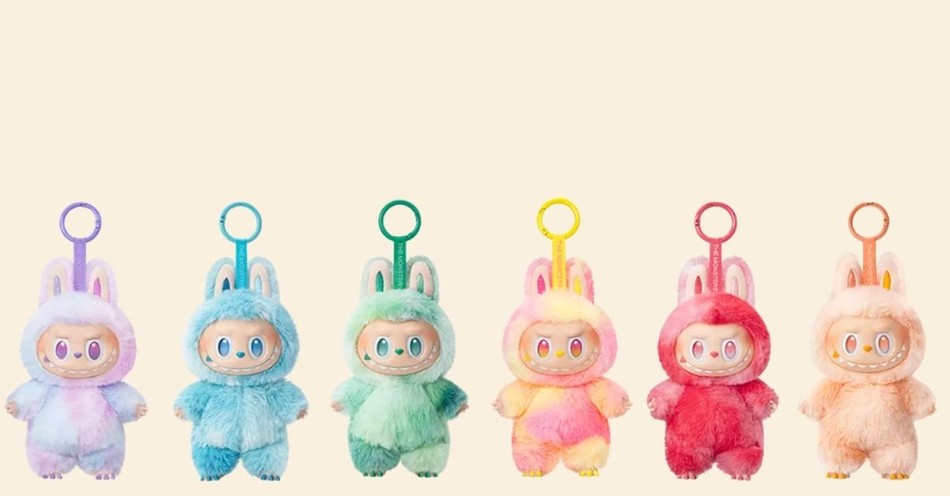Is Labubu just a toy—or a spiritual concern worth noticing? Up until a couple of months ago, if you were familiar with Pazuzu, you were probably an expert in Mesopotamian religion or a fan of The Exorcist (1973). Yet, the recent Labubu crisis of 2025 has given Pazuzu new life. So, is Labubu just a toy or a spiritual concern worth noting? To answer that question, we not only need to clarify the possible connection with Pazuzu, but we also need to consider a variety of other factors.
Pazuzu was a demon associated with the underworld in the Babylonian and Assyrian pantheon. Like other ancient Near Eastern gods, Pazuzu was portrayed as relatively amoral—both a destroyer and protector. Worshippers believed that the gods, including Pazuzu, could be manipulated. Offerings, sacrifices, and various incantations could influence the deities’ actions for good or ill. Pazuzu, for instance, was often employed against Lamashtu, a female demon who often attacked pregnant women or new mothers. Still, Pazuzu was the king of the wind demons and could bring disease, famine, and other maladies.
In biblical perspective, any god other than the Lord is to be avoided. The gods of other ancient Near Eastern nations are inadequate substitutions—constructions of human imagination—for the Triune God. In this sense, any association with Pazuzu would be troubling.
Unfortunately, it isn’t clear that the Labubu is modeled after Pazuzu. Are they weird-looking? Absolutely. Overpriced? Definitely. Are they modeled after the ancient Mesopotamian god Pazuzu? Unlikely. Social media users offered relatively uninformed opinions, superficial visual correspondence, and the suggestion that The Simpsons saw this coming to create a fervor around a relatively innocuous toy. In reality, Labubu bears no more resemblance to Pazuzu than previous figures like those depicted in Sendak’s Where the Wild Things Are.
The Dangerous Response to What's "Trending"
The Labubu “crisis” isn’t, in my estimation, centered on the doll. The doll itself seems relatively benign. Instead, it involves a preoccupation with Labubu that has, at least, potentially deformative effects fueled by sensationalism that distorts reality. The doll, as is often the case, is not the problem, but our responses to it.
1. How Much of Our Time Do We Occupy with Trends?
Love it or hate it, the question Christians should be asking is whether Labubu is occupying too much of our time. I first caught wind of Labubu from my 11-year-old foster daughter. She was desperate to get a Labubu because they have become something of a status symbol among pre-teen girls. The doll isn’t just a possession, but an obsession because Labubu—according to some—will somehow make your life better, rather than seeing it for the passing fad that it is, obtaining a Labubu becomes a chief aim in life.
This dynamic isn’t limited to children. Adults have also joined the Labubu frenzy. Reminiscent of Beanie Babies in the 1990s, Labubu has become the collectible du jour. So much so that Pop Mart pulled Labubu from stores in the U.K. after catching wind of customers fighting over the dolls. Evidently, restocking days for Labubu were like Black Friday sales on steroids.
The reality is that we live in an increasingly global consumer society in which wanting “more” has become a pastime. Labubu is a prime example of the way nostalgia, celebrity influence, social pressure, and a variety of other factors reorient our attention away from the Triune God and toward some object of affection. In this sense, Labubu doesn’t need to be associated with any Mesopotamian deity to be an influence detrimental to those seeking to conform to the image of Christ.

2. The Weakness of Distraction Can Quickly Lead to Unhealthy Obsession
Christians need to be wary of stories with more sizzle than steak because they distract us from more substantive matters. The claims about Labubu’s demonic influence seem to fall apart with relatively little research into the background of the Mesopotamian deity and the origins of the dolls themselves, which were inspired by Nordic mythology. Yet, many Christians endorsed and distributed speculative warnings about demonic and spiritual influence.
Biblically, what would give us any indication that demonic influences enter through physical objects? Not really. There are some references to spiritual power being carried through physical objects, such as Jesus’s garment (Matt 9:20-22; Mk 5:25-34; Lk 8:43-48) and Paul’s handkerchiefs and aprons (Acts 19:11-12). However, there are no negative examples of the same phenomenon. Instead, we tend to see that detestable objects associated with idolatry are problematic because of the way we respond to and relate to them. When we covet or worship what the Lord has forbidden, we embrace disobedience and will suffer its consequences (Deut 7:25-26; Josh 7:10-26; Rev 9:20).
To be clear, I am not claiming that there is no demonic activity in the world (cf. 1 Cor 10:19-20), nor would I deny the experiences of those who have had encounters with the spiritual realm. Instead, I am suggesting that buying into the supposed demonic background of Labubu is misleading because it focuses on the item rather than addressing the way Christians interact with and talk about them. It draws Christians into a distorted world, distracting them from their core theological tasks.
The story Christians need to be telling has little to do with Labubu. Our story is centered on Jesus Christ who has been given “all authority in heaven and on earth” (Matt 28:18). Christ’s authority is the ground for going and making disciples. We are to call others to commit their lives to the Triune God through baptism (28:19) and teaching them to live under Christ’s authority (28:20).
We need to be careful not to give Labubu more power than it deserves. Labubu tends to distract us from that story because we subtly suggest that Labubu is some sort of threat. It isn’t. Could Labubu be deceptive? Sure. Yet, the solution to that potential deception is not necessarily to eliminate Labubu and assume we are no longer in danger of being deceived. The solution is to get to the truth—to understand God and his word deeply, allowing the Holy Spirit and the scriptures to govern our reactions and responses in the world.
Photo Credit: @Labubu via facebook. 5/25/25




.jpg)
